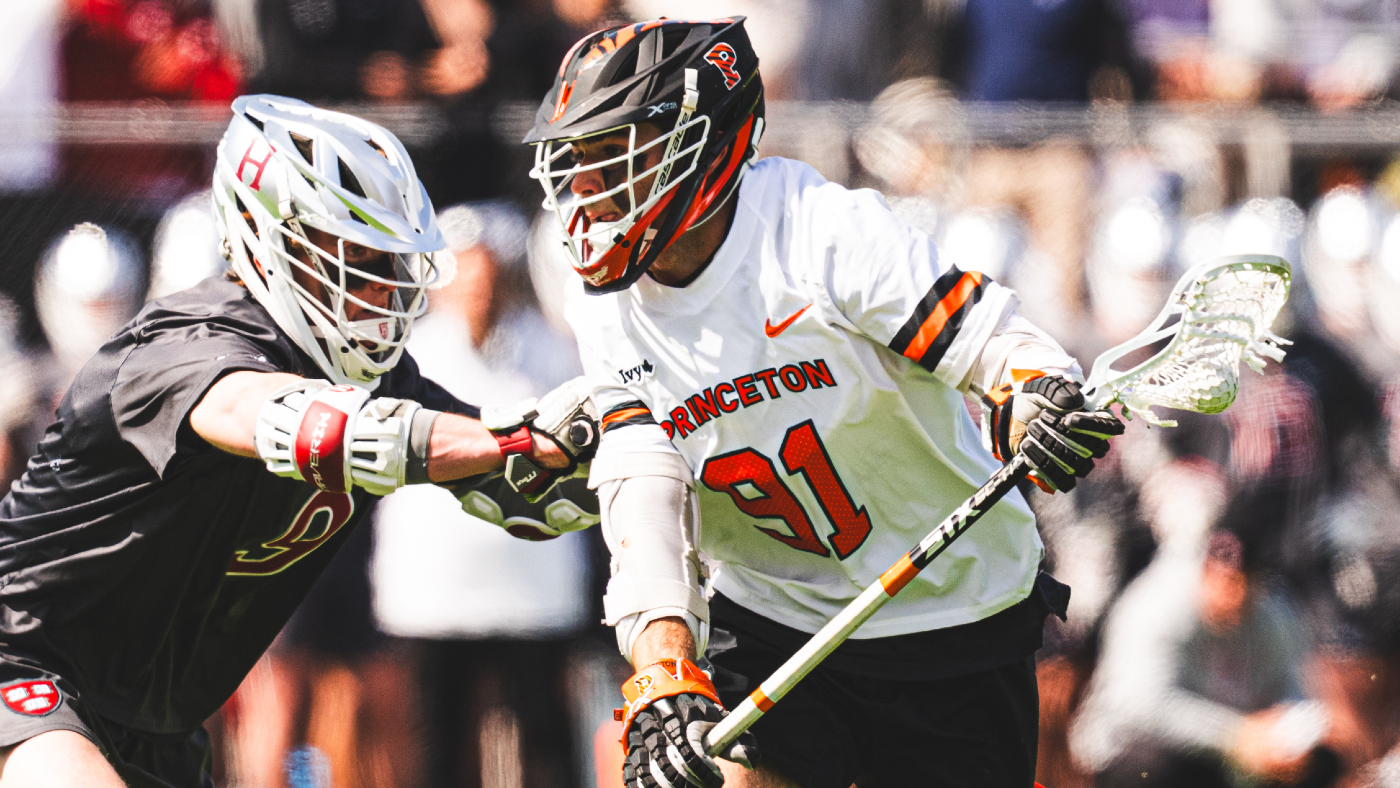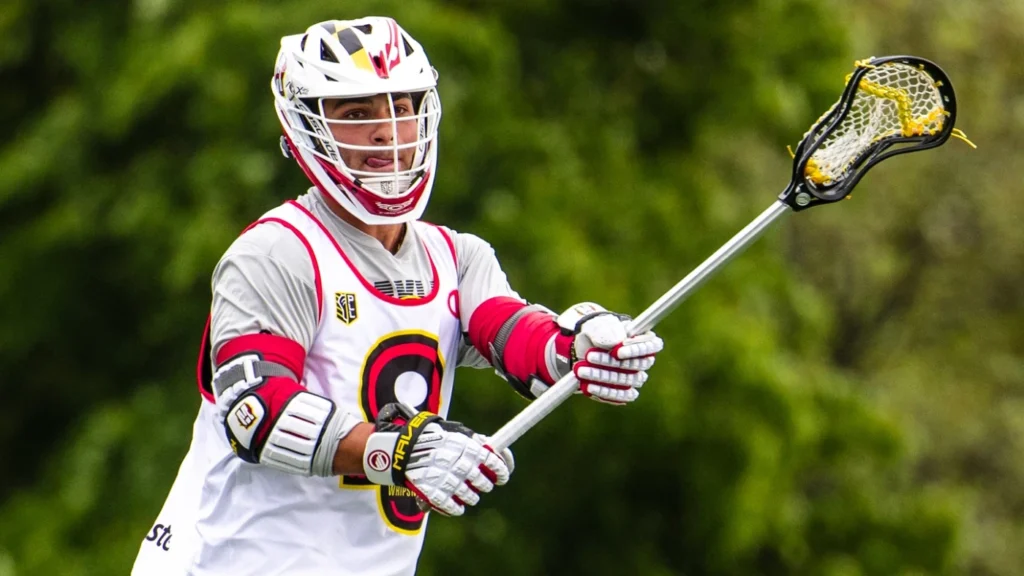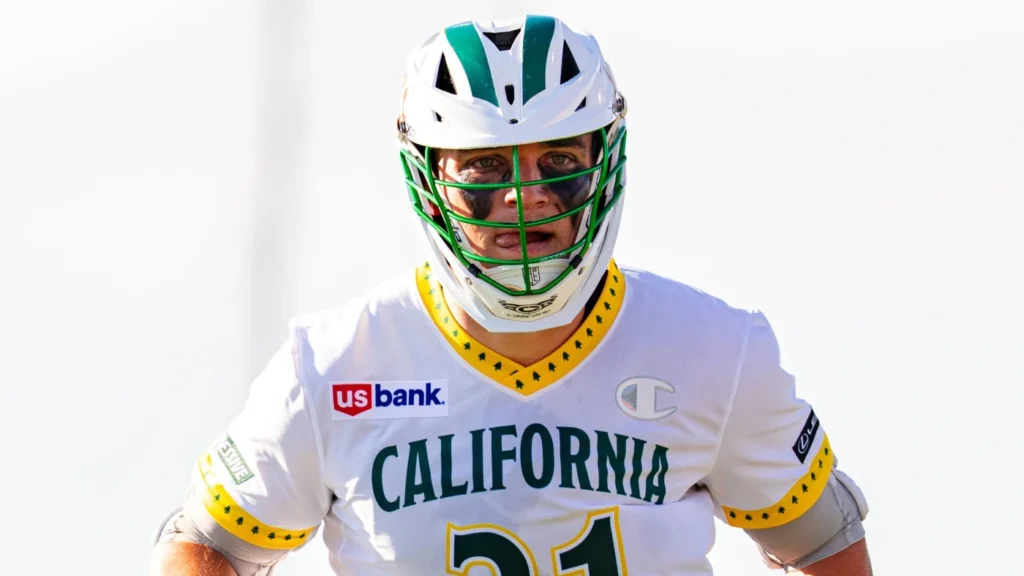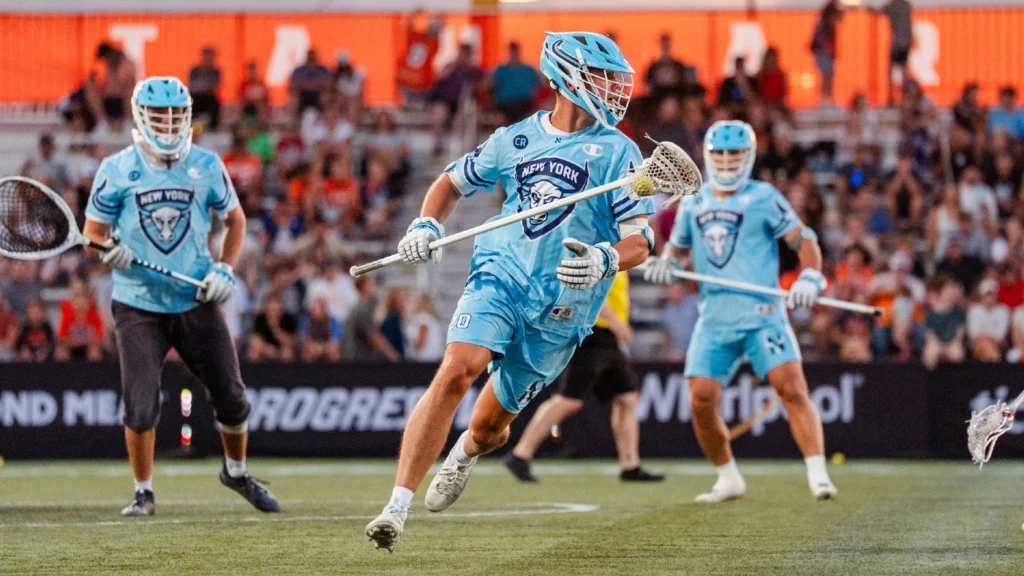
Cannons’ puzzle complete: Coulter Mackesy adds missing piece to Boston’s offense
By Sarah Griffin | May 7, 2025
With the fourth overall pick in the 2025 College Draft presented by Q-Collar, the Boston Cannons filled their most pressing need, selecting left-handed attackman Coulter Mackesy out of Princeton.
Entering the draft, it wasn’t a matter of if the Cannons would take a lefty attackman; it was which one. As head coach and general manager Brian Holman joked in his pre-draft news conference, “I’m going to go down in professional lacrosse history as the guy that just screws up the lefty attack spot. So hopefully I’ll get it right.”
After months of internal debate over whether Boston should take Mackesy or Syracuse’s Owen Hiltz, Holman made the final call.
“It’s the fit,” he emphasized before the draft. “Does Hiltz fit the Cannons best? Or does Mackesy fit the Cannons best? Ultimately it’s going to fall on me, and that’s a good thing.”
With Mackesy now in the fold, the Cannons’ attack unit has the balance and versatility it was missing. The offense was already one of the most talented in the league, but its imbalance on the lefty side had become its Achilles’ heel. Mackesy changes that.
A natural lefty with elite off-ball instincts and efficient finishing ability, he’s the exact profile Boston lacked. And now, with Mackesy completing a unit that already included righty sniper Marcus Holman and facilitator Asher Nolting, the Cannons’ offense has the potential to return to the best in the PLL.
Restoring balance
Boston led the league in offensive efficiency in 2023 but struggled to replicate that same chemistry last season. That dip stemmed from a left side that never quite clicked. Veteran Matt Kavanagh fell out of the lineup midway through the year and has since retired, Will Manny never made his Cannons debut after being acquired midseason, and Mike Robinson, though promising, didn’t solidify himself in the 19-man gameday roster.
Without a consistent left-handed threat, the offense leaned heavily on Nolting to do it all, and opposing defenses keyed in on Marcus Holman as the sole off-ball shooter. The result was an attack that remained dangerous but grew easier to scheme against.
The problem became impossible to ignore after a quiet quarterfinal performance that ended the Cannons’ playoff run. But as Coach Holman has said repeatedly, “We’re not in a rebuild. There’s a different level of urgency here.”
With championship expectations looming, the need to fix the imbalance on attack was clear. Luckily, Mackesy wasn’t just the best fit available; he was the perfect fit.
Why Mackesy?
Mackesy’s calling card is his ability to finish without dominating possession. He thrives off-ball, working through tight windows and exploiting the space created by ball-dominant initiators like Nolting. At Princeton, he became known for curling off the lefty hash and releasing quick, accurate shots before defenses could recover. His touch and timing in two-man games are advanced beyond his years, and his field-spacing potential immediately opens up the Cannons’ playbook.
With Nolting consistently drawing double teams and initiating from X, what the Cannons needed was clear: a natural lefty who could thrive off-ball, finish efficiently, and stretch opposing defenses. Mackesy checks every box.
His arrival relieves pressure on Nolting and gives Holman more breathing room. If defenses collapse on Nolting, he now has balanced outlets: Holman stretching the field from the righty wing, and Mackesy attacking from the left. It creates a “pick-your-poison” scenario that forces opponents to defend the full width of the field – and that’s without even considering Boston’s midfield, led by Matt Campbell.
A deadly trio
While Nolting remains the headliner of this attack, the synergy between Mackesy and Marcus shouldn’t be overlooked. Mackesy’s presence should relieve defensive pressure on Holman, as well. Together, they give the Cannons two off-ball scorers who read defenses well and keep pressure on help-side rotations. That spacing makes Nolting’s job easier and makes the Cannons’ offense exponentially harder to guard.
League beat writer Adam Lamberti put it best: “Mackesy’s best skill by far is his ability to run off picks and score coming up the lefty hash.” In an offense built around movement, precision and timing, Mackesy is tailor-made for Boston’s system.
A win-now move
By all accounts, Mackesy was drafted to make an immediate impact. He’s being plugged in as the missing ingredient for a title run. The Cannons’ offense was already high-octane, but at times last season, it was one-dimensional. With Mackesy, it now has the balance and versatility to pose a threat from every angle.
He won’t be handed the job outright. With a healthy Manny returning, plus Brian Cameron and Graydon Hogg in the mix, the lefty attack spot will be the most competitive battle in camp.
“Whoever we bring in is going to make that side of the field better,” Coach Holman said. “And the competition that we’re going to have in camp is going to make the Cannons better by far.”
If Mackesy lives up to his billing and earns his spot, the Cannons could very well recapture their record-setting offensive form from 2023, and perhaps even turn that firepower into the franchise’s first PLL championship.
With expectations for this roster sky-high, Mackesy could be the final puzzle piece to a championship-caliber offense. Now, it’s time to see that puzzle come to life on the field.




